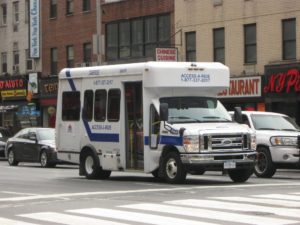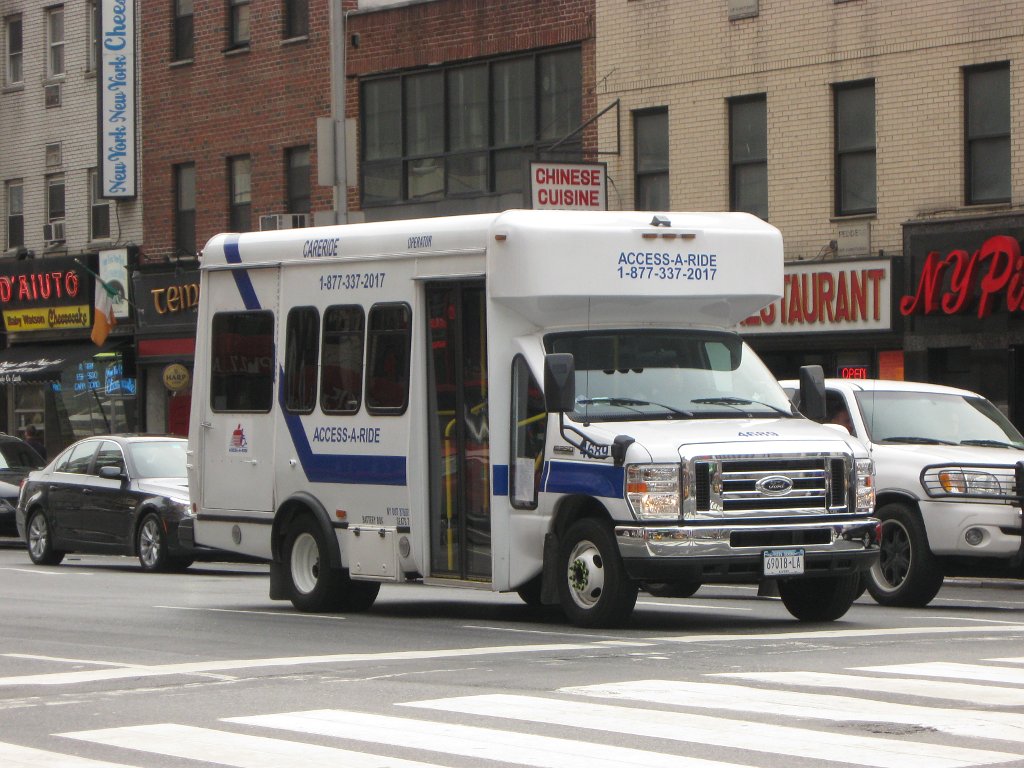
“There are over 100,00 for hire vehicles in the city,” said Councilman Ruben Diaz Sr., the moderator of the hearing. “But barely any are wheelchair accessible.”
The difficulties of getting around the city has made everyday a struggle for disabled New Yorkers.
“I woke up at 5:30 just to come to this [10:00 A.M.] meeting,” wheelchair user Robert Acevedo said. “And I live in Manhattan.”
For many, the problem of accessible transportation is larger than just getting from Point A to Point B.
“It’s definitely a civil rights issue,” said President of Disabled In Action of Metropolitan New York, Jean Ryan. “It’s like excluding all black people, or all women, or all Jews, or all anybody from certain form of transportation. That’s not allowed and it’s not allowed to exclude us either. I can’t take a regular vehicle, but everyone else can take an accessible one. So if they were all accessible everyone would have an equal chance to get a vehicle.”
First to testify was the Deputy Commissioner of the Taxi Limousine Commission, Jennifer Tavis. The TLC regulates all taxi, chauffeur, and for-hire app based transportation in the city.
“The TLC’s mission is to ensure that all New Yorkers receive safe, reliable, and accessible for hire service,” Tavis said. “Accessible transportation means that New Yorkers and visitors to the city that have disabilities can participate in the life of the city including access to health, education, culture, and family.”
Tavis was quick to point out the progress of accessibility that has been made in recent years.
“In 2014, TLC changed the landscape of taxi service to people with disabilities by requiring a percentage of each fleet to be wheelchair accessible,” Tavis said. “Today, almost 2,500 yellow taxis are wheelchair accessible and available to customers, a ten fold increase since 2014.”
Despite the progress in accessibility, there is still not nearly enough transportation options for the city’s handicapped, especially in the boroughs.
“You are in the boroughs. We are in the boroughs. Why are you ignoring a market of at least 100,000 and rising customers?” Ryan asked to the TLC representatives at the hearing.
Even with the services provided, such as the MTA’s Access-A-Ride program, the needs of New York’s handicapped community are not being met.
“Everyone hates them,” said Michael Ring, a member of the Disabled In Action group about Access-A-Ride. “Everyone hates them, the drivers hate them, the people that work there hate them.”
New programs, such as Curb, which is an app that can order wheelchair accessible cabs, rarely work. Even with for hire vehicles, like Uber, accessibility is still a big problem for the disabled.
“In terms of accessibility, the for hire vehicle sector, which are the app based companies in particular, have not taken the steps they are really obliged to under the Americans With Disabilities Act to provide equivalent service,” Tavis said.
The problem of for hire accessibility is just another on a list of issues plaguing the industry on top of recent cab driver suicides and increased traffic congestion.








